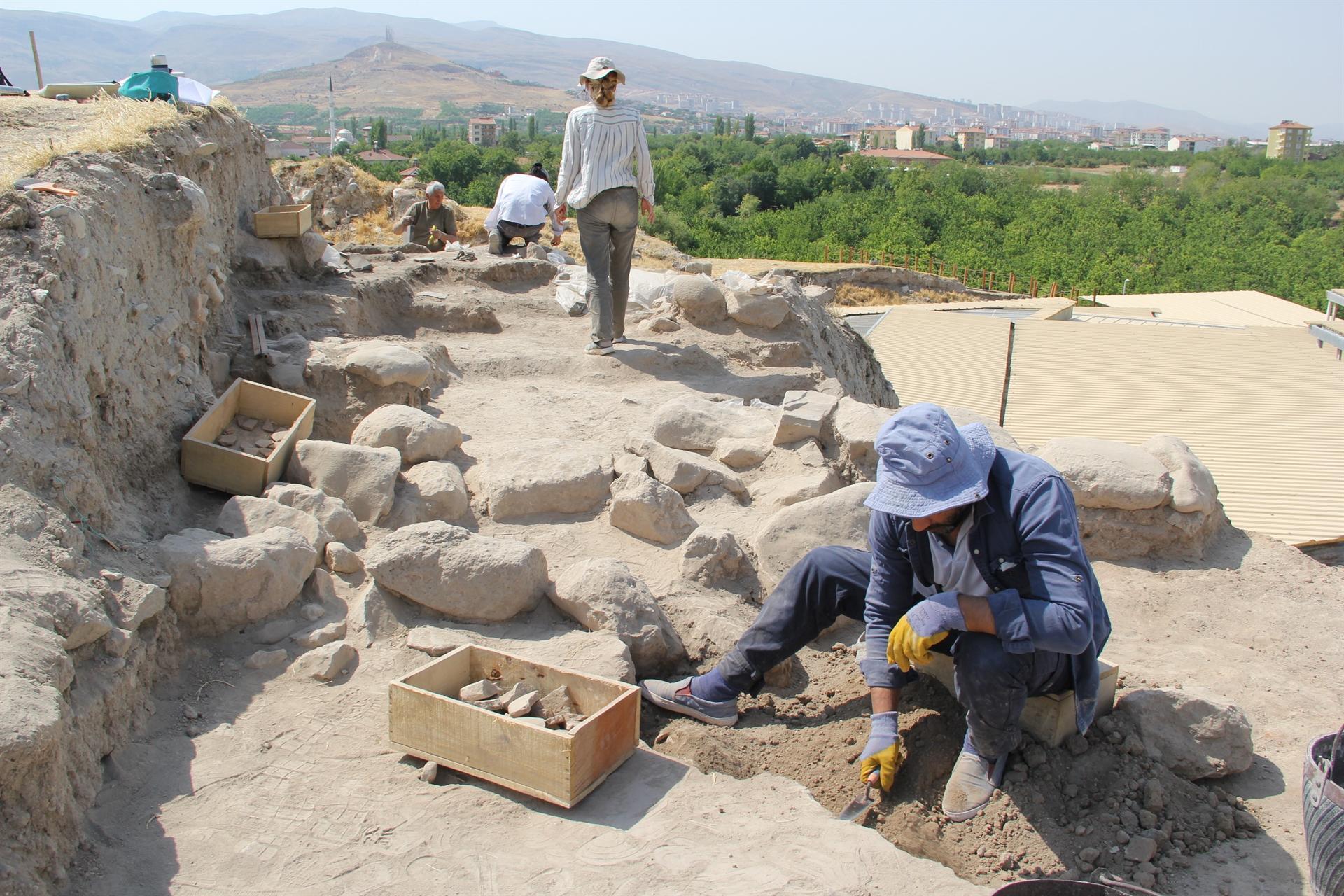
The roughly 7,000-year-old ancient mound of Arslantepe in eastern Turkey is now attracting 10 times more visitors after it was listed as a UNESCO World Heritage site in July, an official said on Sept. 2.
Towering some 30 meters (over 90 feet), Arslantepe Mound, known as the place where the foundations of the state and bureaucracy were laid, is home to the oldest-known mudbrick palace, royal tomb, and drainage line, said Çetin Şişman, the local director of culture and tourism in the eastern Malatya province.
Speaking to Anadolu Agency, Şişman said that, unlike most such structures which are only viewable from the outside, tourists could enter the palace structure and complex in Arslantepe and experience the interior of these ancient buildings themselves.
Underlining that this played a role in the site's surging popularity, he said that while it had previously only gotten 30-40 visits per day, this figure was between 300 and 400 since it became a World Heritage site on July 26.
"We predict that this will increase even further in the next season. We can say that the number of visitors has increased almost 10 times that in previous years," he added.
The decision to add Arslantepe to the list had been taken during the Extended 44th UNESCO World Heritage Committee's online session in Fuzhou, China, becoming the 19th such site in Turkey.
Work still continues to unearth and preserve the archeological remains at Arslantepe, as well as to make it an even more popular tourist destination, Şişman said, with plans to cover excavated areas with a protective roof, build a visitor reception center near the site, and build a new archeological museum.
Other plans include promotional films, preparing brochures, and increasing the number of audio guides and security officers, said Şişman.
"We will continue our work on Arslantepe in the future, not only as the Ministry of Culture and Tourism, but also with our local stakeholders, in consultation with our municipalities, universities, and non-governmental organizations."